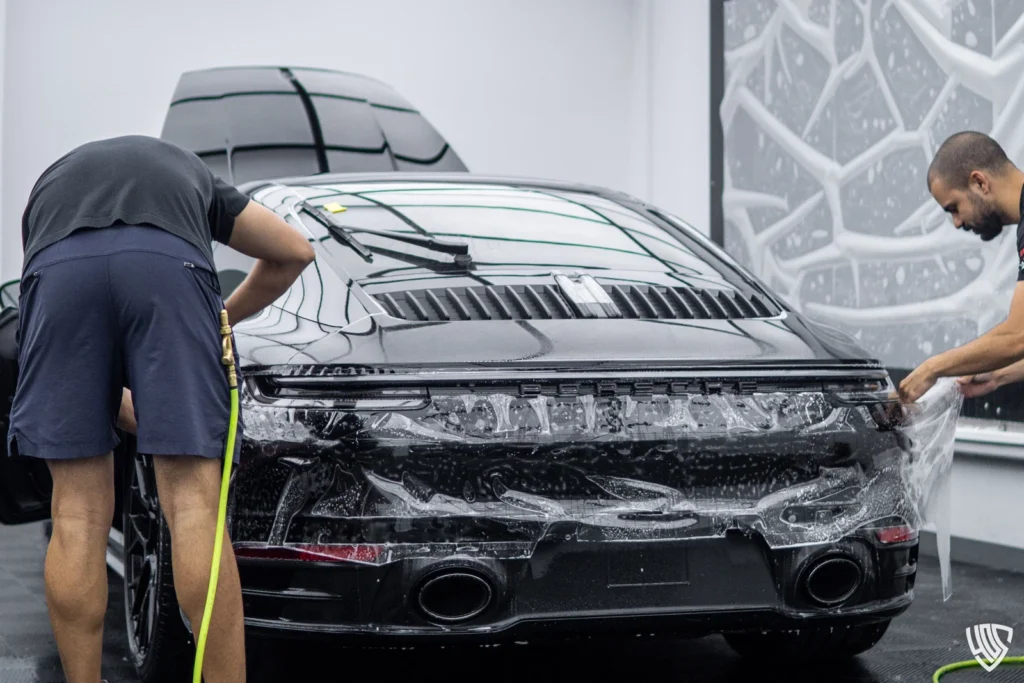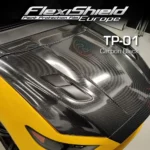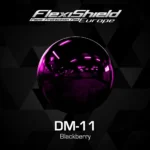Every car owner is well aware of that dreadful moment when a new scratch or chip suddenly appears on the car’s paint. These blemishes may be owed to flying road chips or simply a close encounter with some other object; they do not take long to spoil the looks of your car. Is there a way to avoid such loss before it occurs?
This is where PPF car coating comes into play. This brilliant idea has turned out to be extremely popular among both car lovers and regular drivers and those who want their cars to look immaculate as if they are brand new. In this blog, we will explore why automobile PPF is important, how it operates, and what advantages it has for your automobile.
How PPF Works?
PPF is based on cutting-edge technology and materials such as urethane and TPU (thermoplastic polyurethane) for increased protection. It works as a protection from the different road hazards, UV radiation, and minor wear and tear. In comparison to normal car wrapping, PPF car wraps are created specifically for long-term durability and resistance to damage.
Another important feature of PPF is its self-healing option that works effectively when used. PPF has the ability to heal itself when exposed to heat and repair small swirl marks and scratches on the surface by itself. This makes it different from the normal coating or the wrapping where one may need to add on or polish frequently.
PPF also offers UV protection, in a way, ensuring that paint does not wear out or change color due to sun exposure. This makes it an essential part of PPF automotive care solutions, particularly for cars with constant exposure to extreme atmospheric conditions or parked outside.

Key Benefits of PPF for Automobiles:
Maintains the Car’s Paint Finish and Value:
PPF serves as a shield against scrapping, chipping as well as staining thus maintaining the primary paint coat of your car. This can go a long way in ensuring that resale value of the car is not compromised since buyers tend to look at cars that appear brand new.
Provides Long-Lasting Protection:
PPF car coating does not wear off easily as with the case of wax or ceramic coating, and is long-lasting. It has a long-lasting surface that doesn’t require regular repainting, thus protecting your vehicle for several years.
Enhances Vehicle Aesthetics:
This means that PPF has a transparent layer and a non-glossy one, making it possible for car owners to choose how their car will look. Whether it is glamour with a glossy finish or elegance with a matte finish, PPF provides the best in both form and function.
The above-listed paint protection film benefits make this product one of the best car protection solutions available in today’s market.
Applications of PPF in the Automotive Industry:
PPF is versatile and can be applied to various parts of a car to ensure comprehensive protection:
- Bumpers and Hoods: These high-impact areas are most likely to be chipped or scratched. PPF affords great protection to them so that they remain in perfect condition.
- Side Mirrors and Door Edges: The side mirrors and edges of doors tend to be subjected to more frequent contact with other surfaces. PPF protects such areas from getting scrapes and marks.
- Popular Types of PPF:
- Clear PPF: Provides a clear and smooth sheen that brings out the color of the car as if freshly manufactured.
- Self-Healing PPF: It tends to minor breakages thereby eliminating the need for constant maintenance.
- Custom Options: With the standard PPF offered, there are variations that provide options for specific styles and surfaces.
It is also noteworthy to add that PPF is used not only in the automotive industry but also in other industries, such as electronics and aviation, which confirms its effectiveness and applicability. Nevertheless, its main use is still in the protection of various cars, making it an essential part of PPF automotive care.
PPF Maintenance Tips:
In order to have your PPF car serve you for a longer period, proper maintenance is very important. Follow these tips to keep your vehicle looking its best:
How to Clean and Care for PPF-Coated Cars?
Avoid harsh detergents and use soft materials like the microfiber cloth to clean your car. Do not use strong chemicals or rough materials on the film as they will scratch or tarnish the finish.
Mistakes to Avoid During Maintenance:
- Avoid using high-pressure water jets at the edges of the film.
- Do not wax unless the product used is PPF-safe.
- Avoid parking under trees to minimize chances of the film getting contaminated by tree saps and bird droppings.
Longevity and Repair Options:
For minor damages on your PPF, self-healing films are designed to heal themselves when exposed to heat. For larger issues, professional repair helps to maintain the film’s integrity. It helps to maintain the longevity of your PPF and keep your car shielded for a longer time.
With these tips on how to maintain PPF-coated cars, your car will remain in optimal condition to provide you with long service as anticipated.

Conclusion:
PPF is an investment that every vehicle owner should consider. PPF coating also plays a crucial role of safeguarding your car paint from any scratches, UV damage, and chips hence enhancing your car appearance while at the same time retaining its value in the market. One of the main benefits of this best car protection solution is that it uses advanced technology such as self-healing PPF.
If you are thinking about the PPF for your car for the first time, or if you want to consider the second layer for your car, it is now evident that PPF automotive care is crucial for anyone who cares about their car. When properly maintained and cared for, automobile PPF can offer several years of protection and safeguarding, while also enhancing the appearance of the vehicle.
Do not wait to take the next step in keeping your car safe today. Discover PPF car coating options that meet your requirements and protect your car from the minor wear and tear it experiences daily. Quality, durability and protection are the reasons for choosing PPF for a car and its shiny exterior.














